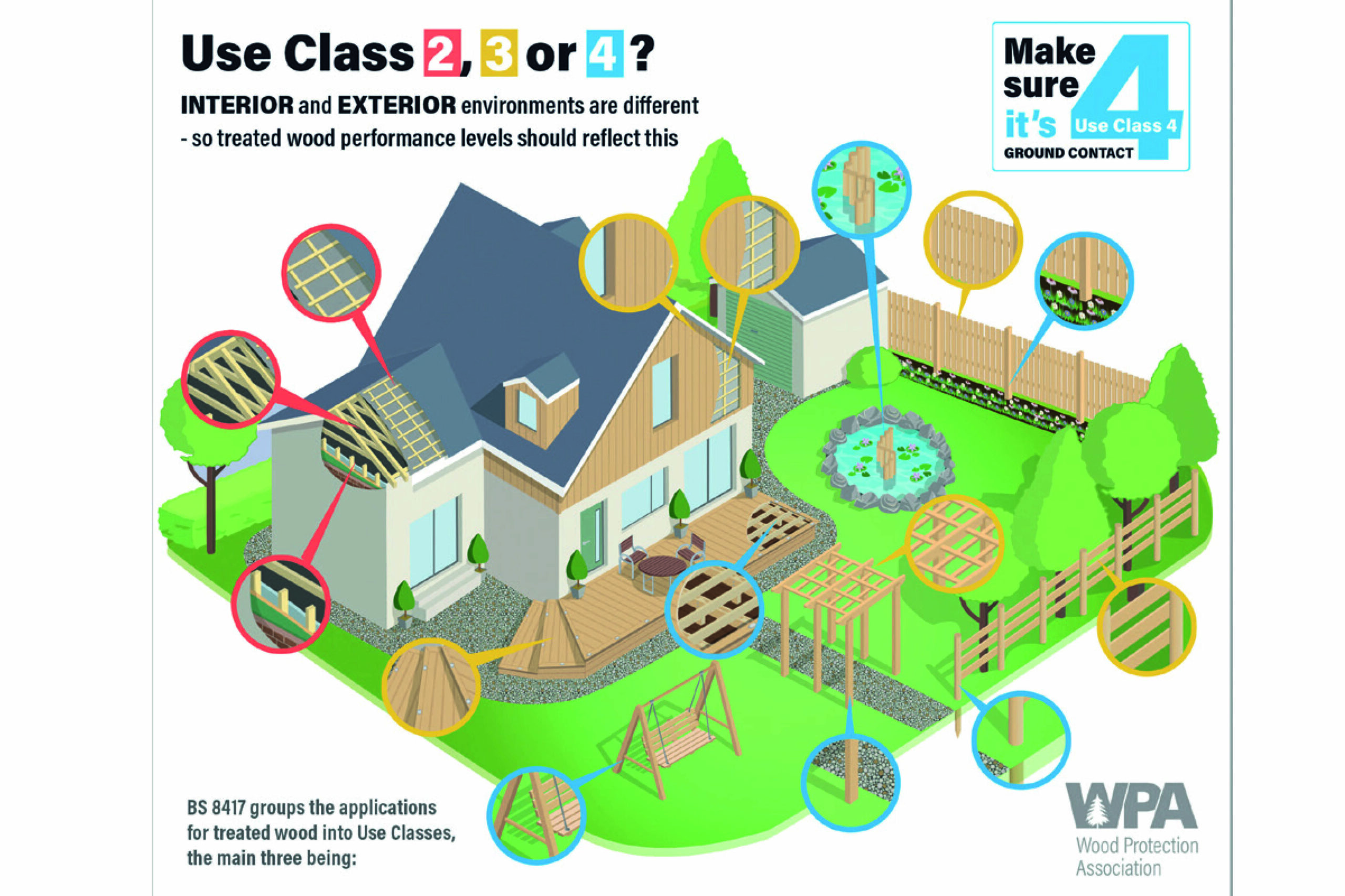
Top tips to understand Use Classes and treated woods
When dealing with treated timbers, it is vital that merchants stock and sell fit-for-purpose products. Different timbers may look the same, but many have been factory treated with different levels of preservative. It’s part of the merchant’s role to understand which timbers are treated and where they should be used. For timbers treated with a flame retardant, preservative or wood modification process, making the right choices can even be safety critical,with potentially serious consequences.
Comply with the standards
The BS8417 wood preservation standard includes Use Classes to help identify the right treated timbers for a specific use. Merchants should clearly identify timber stock with these Use Classes for customers, as well as spreading that knowledge among your team. The most common Use Classes are:
• Use Class 2 (Above the ground or DPC, covered): timber for interior use in a dry environment, ie battens, framing, joists, roofs
• Use Class 3 (Above the ground): timber for exterior applications above ground, ie deck boards, cladding, and fence rails. 3(u) indicates uncoated wood, while 3(c) indicates coated wood.
• Use Class 4 (In ground contact): timber used on, or in, the ground and for external structural support, such as fence posts, deck posts, joists and beams, whether or not it sits on other materials.
Remember: it is no longer acceptable to use terms like ‘green treated’, as these do not give enough technical information, especially when it comes to choosing structural timbers for external use. Tell your staff to always use terms like Use Classes 2, 3u and 4 to describe treated products.
Timber Development UK (TDUK) members who supply preservative-treated softwoods have committed to clearly mark the relevant Use Class on their documentation as part of their compliance with the TDUK Code of Conduct. So, if you need to stock timber treated to a specific Use Class, check your documentation and, if you’re still unsure, speak to your supplier.
TDUK works with the Wood Protection Association (WPA) to provide industry with guidance on proper timber treatments. You can learn more and access key resources at www.timberdevelopment.uk and
www.thewpa.org.uk

 Find Your
Find Your